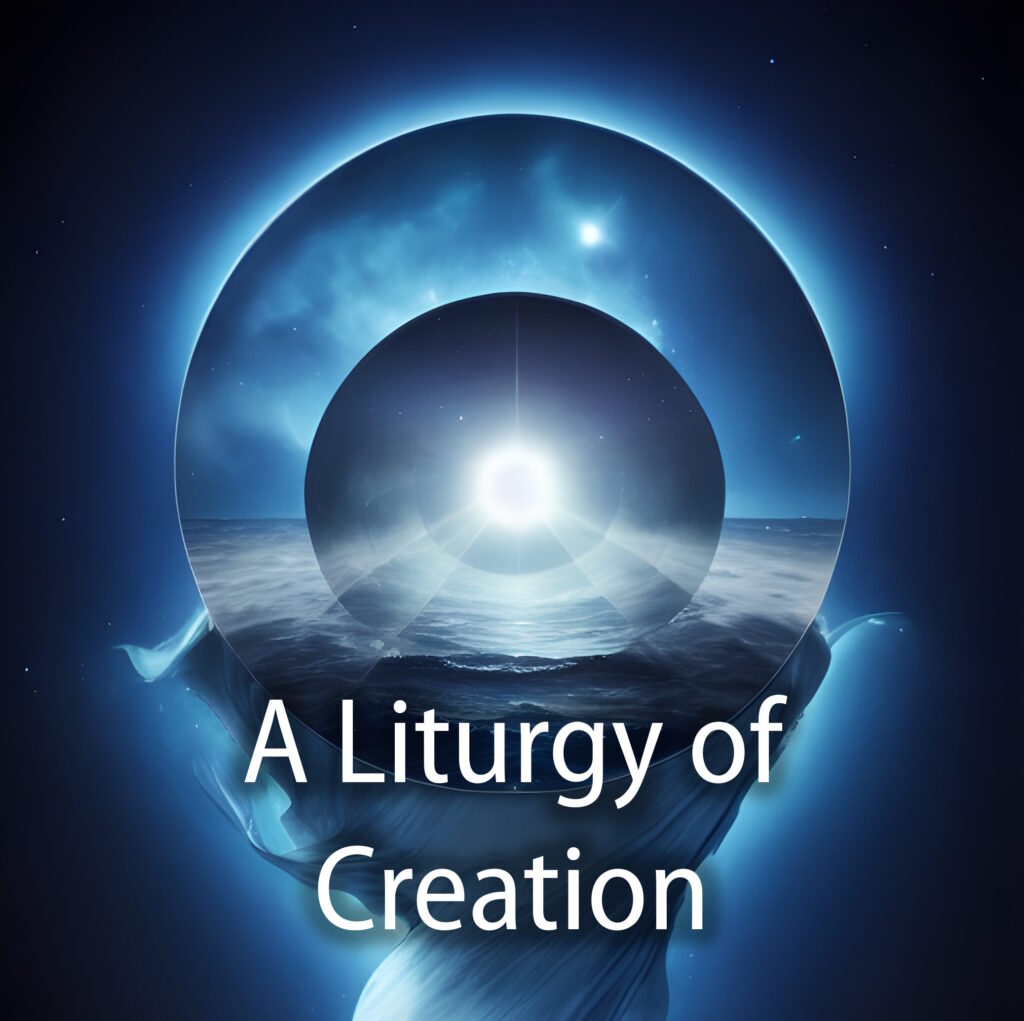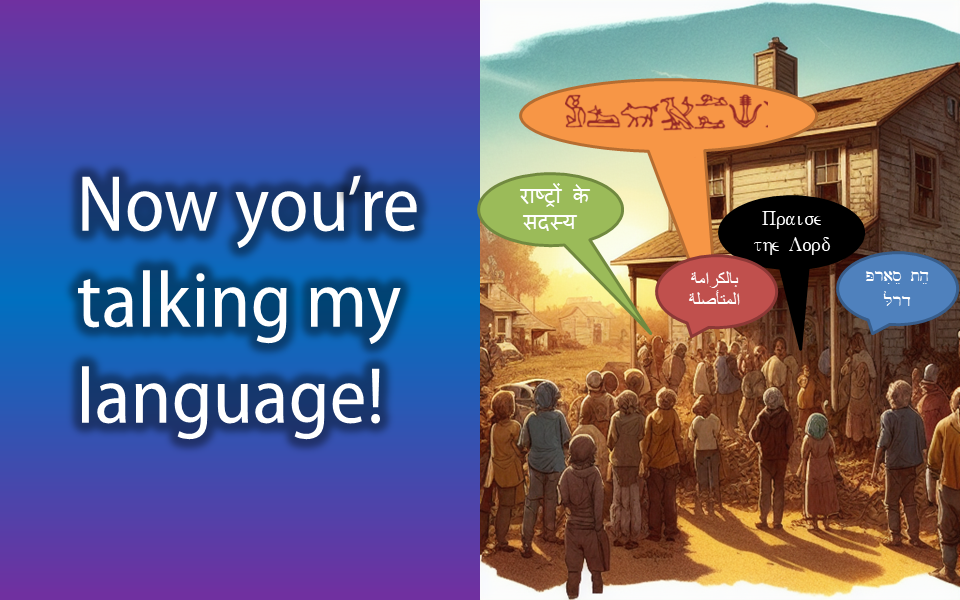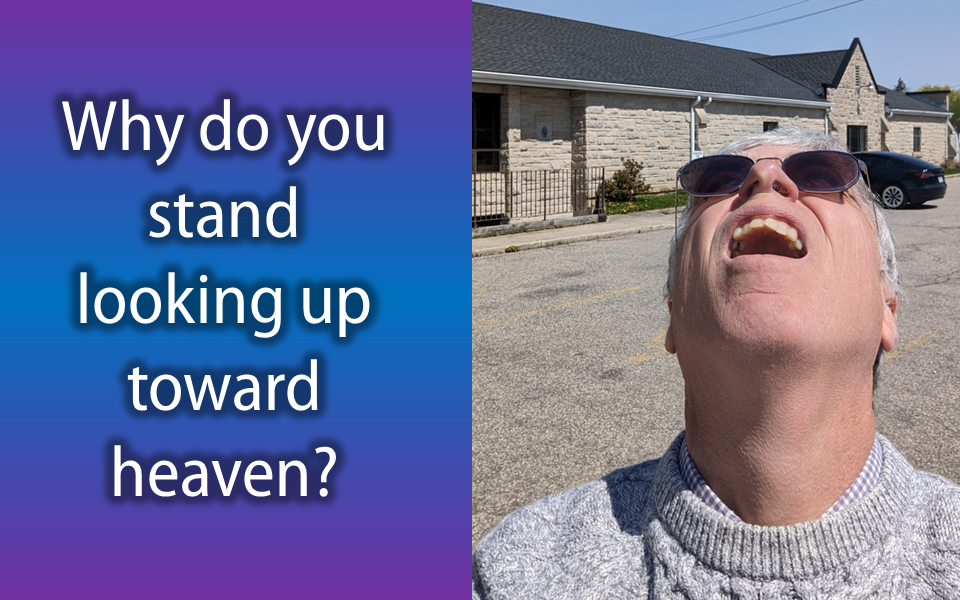Hespeler, June 4, 2023 © Scott McAndless – Trinity Sunday
Genesis 1:1-2:4a, Psalm 8, 2 Corinthians 13:11-13, Matthew 28:16-20
Many people, even faithful believing Christians, will argue over the passage that we read this morning from the Book of Genesis. Many will ask the question, is it true? By which they usually mean, is it true that God really created everything that exists over a period of six 24-hour days. Many of us, perhaps rightly so, are a little bit skeptical about that idea.
But I actually think we are too quick to ask that question of this story. I would argue that you cannot say whether a piece of literature is true or not until you decide something else first. You have to decide what kind of literature it is.
Different Kinds of Literature
This is actually something that we all know, it’s just that we don’t usually talk about it. Every different kind of literature operates according to its own rules that we use to judge whether or not it is true.
For example, when you read a newspaper article and you ask whether it is true, you are actually asking whether all of the things that the article says happened actually happened as it says that they did. A true journalistic article is one that is properly sourced, that quotes people accurately and tells you what happened.
Fiction and Poetry
When you read a book of fiction, on the other hand, you know very well that the events that it narrates never happened and the characters it describes never existed. But why, then, do you read fiction? Is it because there is no truth in it? Of course not! I think that I can honestly say that some of the deepest and greatest truths I have ever learned about humanity and life in this world, I learned from some of the fictional novels that I have read. They are a great source of truth, just not literal truth.
And then you pull out a poem, let’s say, a much-loved poem by Robert Frost. And you read the part where he says, “Two roads diverged in a wood, and I—I took the one less traveled by, And that has made all the difference.” How would you judge whether that poem was true? Would you insist that, unless somebody could show you the actual roads that diverged in a wood somewhere where Robert Frost once stood that that was a false poem? Of course not. The truth of the poem does not depend on the existence of any roads because the road is a metaphor for the course of the poet’s life.
What Kind of Literature is it?
So, I hope you will agree with me that every different kind of literature has different rules for their truthfulness. And the Bible is not just one kind of literature. It is a collection of various types of literature. And so, if you want to know whether and how certain passages are true, you need to know what kind of literature you were dealing with.
So, what kind of literature is the creation story? I suspect that most of us would agree that it was not intended to be a journalistic account of what actually happened at the beginning of all things. It predates the invention of journalism by many centuries. Therefore, the truth of it does not depend on everything having happened exactly as it describes. Nor would we call it a scientific textbook, which would mean that it’s truth would have to be demonstrated through repeatable experimentation and observation. But what sort of literature are we dealing with?
A Liturgy

I am going to make a suggestion that might not necessarily occur to many people. I am going to suggest that the story of creation in Genesis chapter 1 is actually a liturgy. A liturgy is a very specific kind of literature. It is a document written to guide a community through an act of worship. Our Sunday morning bulletin, for example, is a very simple kind of liturgy.
And there are some pretty good reasons for thinking that Genesis 1 could be a liturgy. It is very repetitive, and you can easily imagine how it might have worked as a sort of call and response. You can imagine, for example, the worship leaders calling out, “And there was evening and there was morning.” And then all the people responding, “the first day, the second day, the third day, and so on.”
The Enuma Elish
But, even more important than that, we know that there were worship services in the ancient world that were very similar to what we see in Genesis 1. I mean, extremely similar. In Babylon, during the Neo Babylonian kingdom, there was an annual New Year’s festival. And as a key part of this worship festival for the Babylonian gods, the great epic story, called the Enuma Elish, was recited.
And guess what the Enuma Elish was. It was the story, told in seven tablets, of how Marduk, the chief god of the Babylonians, created the world and everything in it. And there is a lot in common between the two stories.
How Marduk Created
Marduk creates, in fact, following almost exactly the same steps as the Lord God does in Genesis. He separates the waters above from the waters below. He creates lights in the dome of the sky to organize the passage of time and seasons. Step by step, the creation takes place in pretty much the same order.
So, there is a lot in common. But there is also a lot that is different. In Genesis, how does God create? By a word. God speaks and everything in all creation is put into its proper place.
Marduk, on the other hand, has a very different approach to creation in the Enuma Elish. Marduk creates almost everything through violence. When he separates the waters above from the waters below by creating a solid barrier, he doesn’t do it by speaking like God does. He does it by defeating a great monster named Tiamat and then literally ripping her in two from top to bottom.
When he creates humanity, he does so by killing another god and creating the human beings, as slaves to the gods, out of the blood of that dead god. So, while it is remarkable how the two stories are alike, it is in many ways even more remarkable how different they are.
Story Originated in Babylon
The connections between the two stories are so significant, that most scholars today believe that the Genesis account was influenced by the Babylonian creation story. And, by far, the most likely time when that would have happened was while the people of Israel were living as exiles in the land of Babylon.
While they were there, many of them living as servants in the homes of the Babylonian elite, they would have been exposed to the Enuma Elish. And, in the midst of that harrowing experience, some of them may have been inspired by God to create this liturgy of creation.
Why they Needed this Story
Put yourself for a moment into the position of those poor Judean exiles in Babylon. They have been subjugated and defeated by this terrible violent people. They have been robbed of their homeland by them and reduced to being their servants and slaves.
And every year, at the Babylonian New Year, they are forced to listen to a story that affirms that the Babylonians are the greatest and that they deserve to rule over the whole world. And why are the Babylonians so great? Well, obviously because the Babylonian gods are the best. And we know that the Babylonian gods are the best because look at all of the other gods and monsters they killed and slaughtered and tore into pieces in order to create the world. That was the message.
A Better Story
And can you not imagine some poor Judean exiles getting together one day and saying, “No, that’s just not right. The world was not created to be a place of violence and slaughter and death. It was not created merely so that the strong could exploit the weak. It was created to be a place of hope and life. And so, it couldn’t have been those violent Babylonian gods who made everything.
“It must have been our God who is the creator of all. And our God did not create everything by violence and slaughter and tearing other beings in two, our God brought order and meaning to the universe with… with just a few words. And God made it good. That’s how powerful our God is!”
A Festival
But, of course, it wasn’t enough to just say that. Who would care what a bunch of powerless slaves and exiles said. They needed a powerful way to express it so that people would remember it and have hope. And what better way to do that than to start to gather as a Jewish exile community. Over a week they would gather and celebrate their God as the true creator of the universe.
And let’s just guess what exactly they may have worshipped over those seven days. Day one: God the creator of light. Day two: the creator who separated the waters above from the waters below and created the barrier of the sky. Day three: The creator of dry land and growing plants. Day four: The creator of the sun, moon and stars and, well you get the idea.
Just a Basic Outline
So what we seem to have in the first chapter of Genesis is the basic outlines of the worship that was carried out over this weeklong festival. Of course, there would have been more to it than that. There would have been hymns to sing and we might even have some of the lyrics: “So God created humans in his image, in the image of God he created them; male and female he created them.” I can imagine a choir singing that, can’t you?
I’m sure there must have been dancing and feasting too. What better way to celebrate the creator of growing things than with a feast of fruits, for example. But the basic outline is right there in the seven days of creation story.
The Seven Days
Of course, you realize what this means? All of those people who tie themselves up in knots about how the Bible says that God created the world in seven days and that therefore all of the scientists who say the earth is millions of years old are wrong despite having all of the evidence on their side, may have completely misunderstood what this passage is actually saying. The seven days is not intended to be an indication of how long it took God to do it. It is only an indication of how long it took for the people to celebrate it.
An Act of Resistance
But, more important, this means that this story is about a whole lot more than how the world came to be. It is all about how a subjugated and exploited people can stand up for themselves and resist their abusers. And that is an aspect of this passage that we definitely need to recover given what is going on in our world today.
So, what can we draw from this story to help build a better world? Well, think of it this way. The exiles in Babylon lived in a world where everyone believed that violence and power were the solutions to every problem and that only the most powerful could rule. The Babylonian Enuma Elish reinforced that view of things.
We still live in a society that believes that today. Think of all of the stories we tell – the stories that come out of Marvel Studios for example. But the Jewish exiles told a very different story of a God who created with words, not violence. It was a powerful witness that the world could be different!
Valuing Human Life
The exiles in Babylon lived in a world where human beings like them were considered to exist only to serve the interests of the powerful and wealthy. This was reinforced by the Babylonian creation story that declared that all humans had only been created as servants to the gods.
And make no mistake that we also live in a world that values human life in much the same way. All of us everyday are constantly being judged in terms of what we can produce, what we contribute to the economy. And those who do not produce, or who do not earn enough from the fruit of their labour, are increasingly abandoned and treated as worthless. The Babylonian Creation story’s message is still powerful!
But the Jewish exiles were bold to proclaim in their story that the purpose of humanity was very different – that “In the image of God he created them; male and female he created them.” They dared to tell a story of God giving dominion over the land to all people and that the goods of the earth were gifted to all humanity by God for their sustenance.
A Subversive Sabbath
And, if the people who celebrated this story were essentially slaves, what do a slaves need more than anything else? They need time off! And this story of creation is all about taking time off, isn’t it? That is why the whole thing is built around a seven-day cycle! It is all about getting us to the seventh day, the day of rest!
And in this liturgy, what were the Hebrew exiles saying? They were saying that their time off was not a gift of their Babylonian masters. They were saying that it was a gift of their God – indeed that God had built the entire universe around their need for a break! That was a dangerous thing to say in Babylon, but the Jews told this enduring story, and a good story has a way of getting through to people. The story stuck.
The Genesis creation story is a worship liturgy. But, more important, it offered a way to tell a story that went against the narrative of the world. As such, it had a powerful and enduring impact. Let’s think about the stories that we tell about this world. They can also have the same kind of impact. And let’s also consider how our acts of worship can also transform our understanding of this world. That is where the deepest truth and greatest power of the story of creation can be found.

